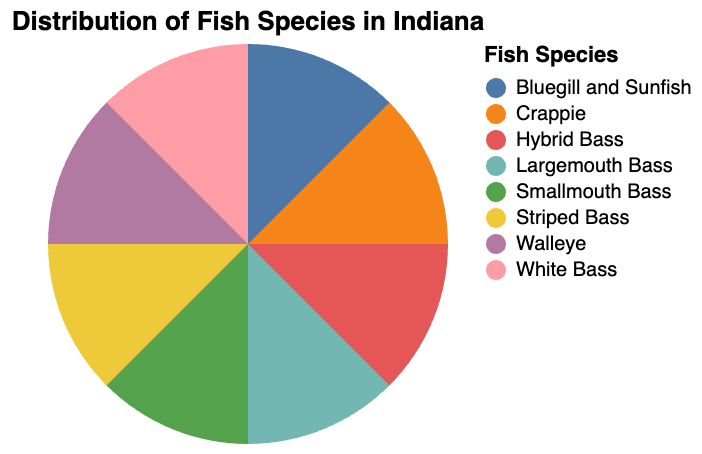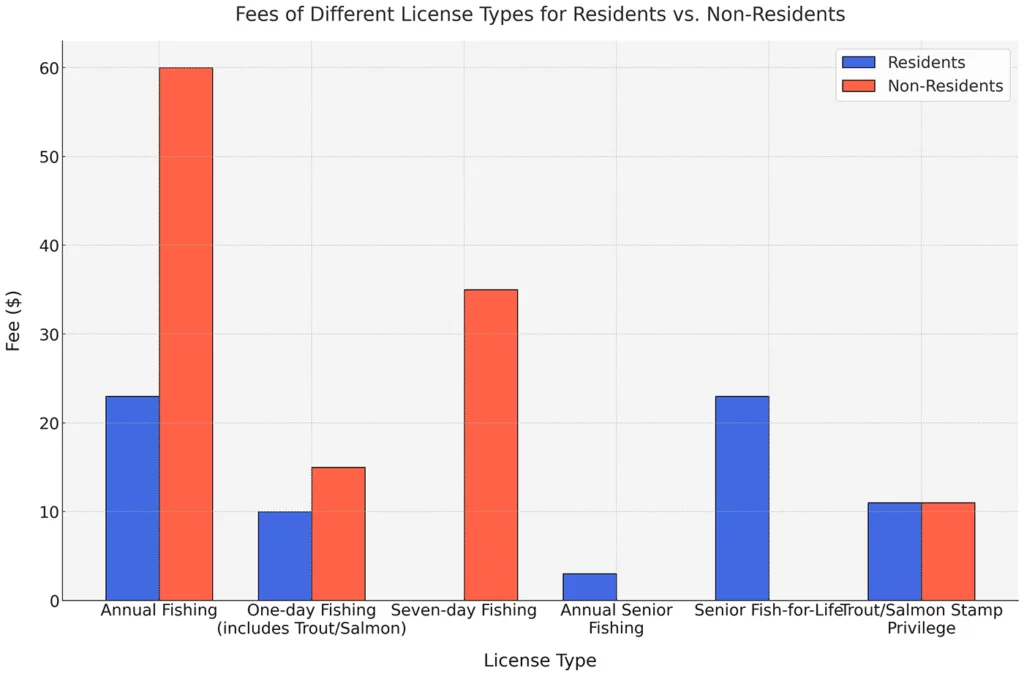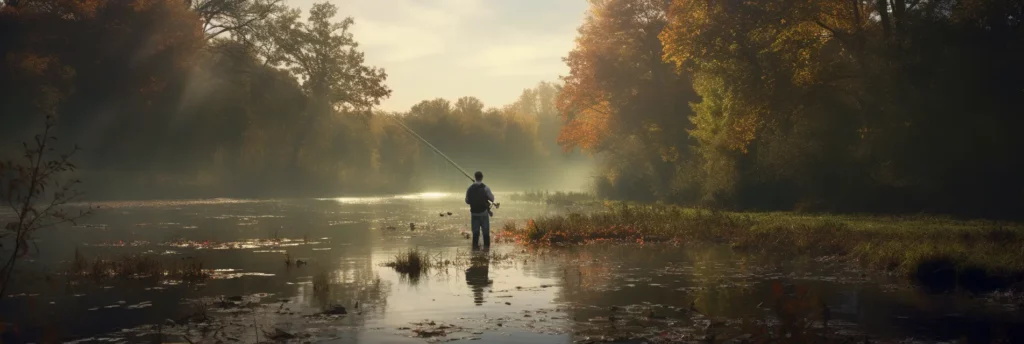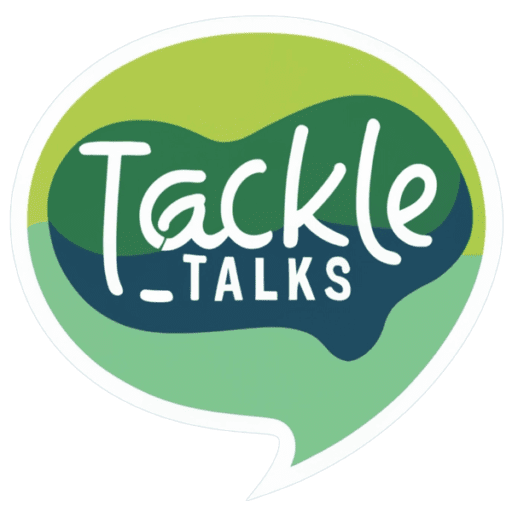Fishing is a popular activity in Indiana, with the state being home to 208 species of fish that inhabit its rivers, lakes, and streams across five watersheds1. Some notable fish species found in Indiana include catfish, crappie, largemouth bass, muskie, northern pike, striped & hybrid striped bass, sunfish, and walleye2. You need to have a Fishing License in Indiana to legally enjoy the state’s diverse aquatic habitats and ensure the conservation of its rich marine life.
The most popular fish caught in Indiana is the largemouth bass. It is considered the undisputed king of all fish in the state and can be found in almost every body of water in Indiana3. The state record for largemouth bass is 14 pounds, 12 ounces, caught in a Harrison County lake in 19913. Largemouth bass are highly sought after by anglers due to their aggressive nature and strong fighting ability, providing an exciting challenge for anglers of all skill levels5.

In 1997, the Indiana Department of Natural Resources (IDNR) Division of Fish and Wildlife recorded 540,386 residents of Indiana as licensed anglers6. Some of the state’s fishing records include a 104 lb blue catfish caught in the Ohio River in 1999, a 3 lb 4 oz bluegill caught in a pond in Greene County in 1972, and a 79 lb 8 oz flathead catfish caught in the White River in Lawrence County in 19667.
Recent fishing reports from September 2023 indicate that anglers at Summit Lake have been catching largemouth bass weighing between 3-6 lbs, crappie of multiple sizes, and bluegill up to 9 inches. Additionally, channel catfish and carp have been caught more frequently in various locations8.
To fish in Indiana, both residents and non-residents need a valid fishing license, which can be purchased online or in person at authorized license vendors 9 10. The fees from fishing license purchases contribute to fishery management, habitat protection, endangered species programs, and conservation education10.
When do yearly Indiana Fishing Licenses expire?
In Indiana, timing is crucial when it comes to fishing licenses. All annual licenses and stamp privileges are valid from April 1 of the current year through March 31 of the following year. This means if you purchase a license on, say, June 1, 2023, it will remain valid until March 31, 2024. It’s essential to keep this timeframe in mind to ensure you’re always fishing legally and responsibly.
But why this specific period? The April-to-March cycle aligns with the fishing season, allowing anglers to make the most of Indiana’s aquatic treasures. Whether you’re a seasoned pro or a newbie, staying updated with your license’s validity ensures a hassle-free fishing experience.
Remember, fishing without a valid license can lead to penalties. So, as March approaches, it’s a good idea to mark your calendar and renew your license. This way, you’re all set for another year of memorable fishing adventures in the Hoosier State.
Types of Fishing Licenses in Indiana
Indiana offers a variety of fishing licenses to cater to the diverse needs of anglers. Whether you’re a resident, non-resident, youth, or senior, there’s a license tailored for you. Here’s a breakdown:
| License Type | Description | Fee for Residents | Fee for Non-Residents |
|---|---|---|---|
| Annual Fishing | Valid for a year, from April 1 to March 31 | $23 | $60 |
| One-day Fishing (includes Trout/Salmon) | Valid for a single day | $10 | $15 |
| Seven-day Fishing | Valid for seven consecutive days | – | $35 |
| Annual Senior Fishing | For Indiana residents aged 64 and above | $3 | – |
| Senior Fish-for-Life | Valid for the holder’s lifetime, for seniors | $23 | – |
| Trout/Salmon Stamp Privilege | Required for trout and salmon fishing | $11 | $11 |

Remember, the type of license you choose should align with your fishing plans. For instance, if you’re planning a week-long fishing trip, the Seven-day Fishing license for non-residents might be the most economical choice. Always ensure you have the right license to avoid any legal complications.
Understanding Fishing Regulations in Indiana
Navigating the waters of Indiana requires more than just a fishing rod and bait. It’s essential to be well-versed with the state’s fishing regulations to ensure a responsible and enjoyable fishing experience.
2023-2024 Indiana Fishing Regulation Guide
The Indiana Department of Natural Resources provides a comprehensive Fishing Regulation Guide for the years 2023-2024. This guide is available in both online and PDF versions and covers everything from size & bag limits to specific regulations for different fish species.
Key Regulations to Note
- Size & Bag Limits: Indiana has specific size and bag limits for various fish species to ensure sustainable fishing practices.
- Basic Fishing Information: This section provides general guidelines for fishing in Indiana, including the best practices and etiquettes.
- Specific Regulations: There are unique regulations for fishing bass, inland trout, and in areas like the Ohio River and Lake Michigan.
Obtaining a Fishing License in Indiana
Before you cast your line in Indiana’s waters, it’s essential to have the right fishing license. Here’s a step-by-step guide on how to obtain one:
1. Access Indiana’s Online License Portal
- Visit the Indiana Fish & Wildlife Online License System.
- If you’re a first-time user, you’ll need to create an account in Access Indiana to log in to the DNR Fish & Wildlife online portal.
2. Choose the Right Fishing License in Indiana
- Indiana offers various licenses, from annual to one-day passes. Select the one that best suits your needs.
- You can also apply for reserved hunts, register for the harvest information program (HIP) number, and find your Customer ID through the portal.
3. Payment
- Payment forms accepted include MasterCard, Visa, and Discover.
- Online license purchases have an additional fee for system-support maintenance and updates, plus a credit card company fee on each transaction.
4. Print or Save Your Fishing License
- After purchasing, you can print the license on your printer or save the electronic PDF copy on your mobile device.
Important Notes
- Ensure your personal details, like address and date of birth, are correct before finalizing the purchase.
- Licenses are non-transferable and non-refundable.
- Always carry a signed license or the electronic copy while fishing and present it upon request from a DNR Conservation Officer or any other authorized law enforcement officer.
By following these steps, you’ll be all set to enjoy a day out fishing in Indiana’s beautiful waters, all while ensuring you’re adhering to the state’s regulations.
License Exemptions
In Indiana, certain individuals are exempt from the requirement of purchasing a fishing license:
- Indiana Residents Born Before April 1, 1943: These residents are exempt from needing a fishing license when fishing in Indiana waters. However, they have the option to purchase a Voluntary Senior Fishing License, which contributes to fisheries conservation and public access in Indiana.
- Landowners or Lessees: Indiana residents who are landowners or lessees of farmland, and who farm that land, are not required to obtain a permit while fishing on their property.
- Non-resident Youth: Non-resident youth aged 17 or younger are exempt from needing a fishing license in Indiana. They are also exempt from the state migratory waterfowl stamp and gamebird habitat stamp.
Lifetime Indiana Fishing Licenses
Indiana once offered Lifetime Licenses, allowing residents to fish or hunt throughout their lives without the need for renewal. However, as of recent regulations:
- Discontinuation: The sale of new lifetime licenses has been discontinued.
- Existing Licenses: Those who have previously purchased lifetime licenses can continue to enjoy their benefits. These licenses remain valid for the holder’s lifetime and are honored by the state.
- Contribution: The funds from lifetime licenses have been instrumental in supporting conservation efforts and maintaining the state’s rich biodiversity.
Conclusion
Fishing in Indiana is more than just a pastime; it’s a journey into the state’s rich aquatic world. Whether you’re a seasoned angler or just starting out, understanding and adhering to the state’s regulations ensures a harmonious relationship with nature. By obtaining the right license, respecting size and bag limits, and practicing ethical fishing, you contribute to the conservation of Indiana’s aquatic resources. So, the next time you cast your line in Indiana’s waters, take a moment to appreciate the balance of nature and the role you play in preserving it.

Frequently Asked Questions (FAQs)
1. Where can I find a copy of the administrative rules that regulate hunting and fishing in Indiana?
The administrative rules for hunting and fishing can be found on the official Indiana DNR website.
2. Is tournament fishing regulated in Indiana?
Yes, tournament fishing is regulated in Indiana. Specific guidelines and regulations can be found on the Indiana DNR website.
3. What are the size and bag limits for largemouth bass or other fish in Indiana?
Indiana has specific size and bag limits for various fish species, including largemouth bass. These limits are detailed in the Indiana Fishing Regulation Guide.
4. Can gamefish be used for bait?
No, it’s illegal to use gamefish as bait in Indiana.
5. Why is it illegal to use live gizzard shad for bait in most waters?
Using live gizzard shad as bait can introduce them to waters where they are not native, potentially harming the ecosystem.
6. Is “catch and release” always the best tool for fisheries management?
While “catch and release” is a popular conservation method, its effectiveness varies based on the specific goals of fisheries management.
7. Where can I fish for northern pike? What waters are recommended for other fish?
Indiana has various waters suitable for fishing northern pike and other fish species. The Indiana DNR website provides recommendations.
8. If fish taste bad, are they contaminated?
Not necessarily. The taste of fish can be influenced by various factors, including their diet and the water quality. However, if you suspect contamination, it’s best to consult local advisories.
9. How does the state determine where consumption advisories apply?
Consumption advisories are based on tests and studies conducted on fish samples from various waters. These advisories provide guidelines on the safe consumption of fish.
10. Is it safe to fish on the White River between Anderson and Indianapolis?
The safety of fishing in specific areas can vary based on several factors, including water quality and contamination levels. It’s recommended to check the latest advisories and guidelines from the Indiana DNR.
11. How do I register for a Hunter Education class?
You can register for a Hunter Education class through the Indiana DNR website.
12. How do I obtain a hunting, fishing, or trapping license in Indiana?
Licenses can be obtained online through the Indiana Fish & Wildlife Online License System or at authorized license vendors across the state.
Footnotes:
- https://en.wikipedia.org/wiki/List_of_fishes_of_Indiana ↩︎
- https://on.in.gov/fish-id ↩︎
- https://fishinglidokey.com/indiana-game-fish-species/ ↩︎
- https://fishinglidokey.com/indiana-game-fish-species/ ↩︎
- https://www.southwestjournal.com/biggest-fish-indiana/ ↩︎
- https://www.purdue.edu/hhs/nutr/fish4health/indiana/assets/INMail.pdf ↩︎
- https://www.in.gov/dnr/fish-and-wildlife/fishing/indiana-record-fish-program/records/ ↩︎
- https://www.in.gov/dnr/fish-and-wildlife/fishing/indiana-fishing-reports/ ↩︎
- https://www.in.gov/dnr/fish-and-wildlife/licenses-and-permits/ ↩︎
- ↩︎
- ↩︎

